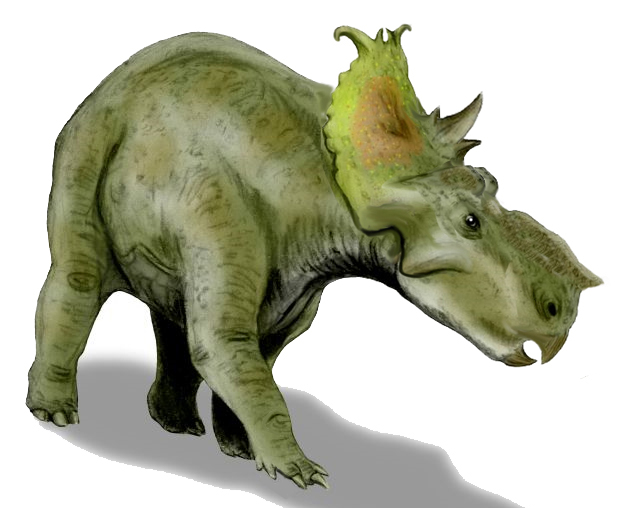The Thick-Nosed Dinosaur
Pachyrhinosaurus was a unique and fascinating dinosaur that lived during the Late Cretaceous period, around 70 to 66 million years ago.

| Meaning | Thick-nosed lizard [Pachy–rhino–saurus] |
| Pronunciation | pak-ee-RYE-no-sore-us |
| When: | Late Cretaceous (about 73–69 million years ago) |
| Where: | North America (Canada, Alaska) |
| What: | Ceratopsian (herbivorous) |
| Weight: | Estimated around 3–4 metric tons |
| Length: | Approximately 6 meters (20 feet) |
| Diet: | Herbivorous (ate cycads, ferns, and other vegetation) |
| Discovered: | First described by Charles M. Sternberg in 1950 |
It belonged to a group of dinosaurs called ceratopsians, which are characterized by their beaked faces and often elaborate facial horns and frills.
Pachyrhinosaurus, which means “thick-nosed lizard,” is named for the large, bony mass, or boss, on its nose and forehead instead of the long, sharp horns seen in other ceratopsians like Triceratops.
Pachyrhinosaurus could grow up to 6 meters (20 feet) in length and weigh around 4 tons. These herbivorous dinosaurs roamed in herds across what is now North America, particularly in areas of modern-day Canada and Alaska.
Their strong beaks and powerful jaws allowed them to feed on tough, fibrous plants.
The distinctive bony boss on Pachyrhinosaurus’ face may have been used for various purposes, including species recognition, defense against predators, and possibly even combat with other Pachyrhinosaurus individuals during mating season.
